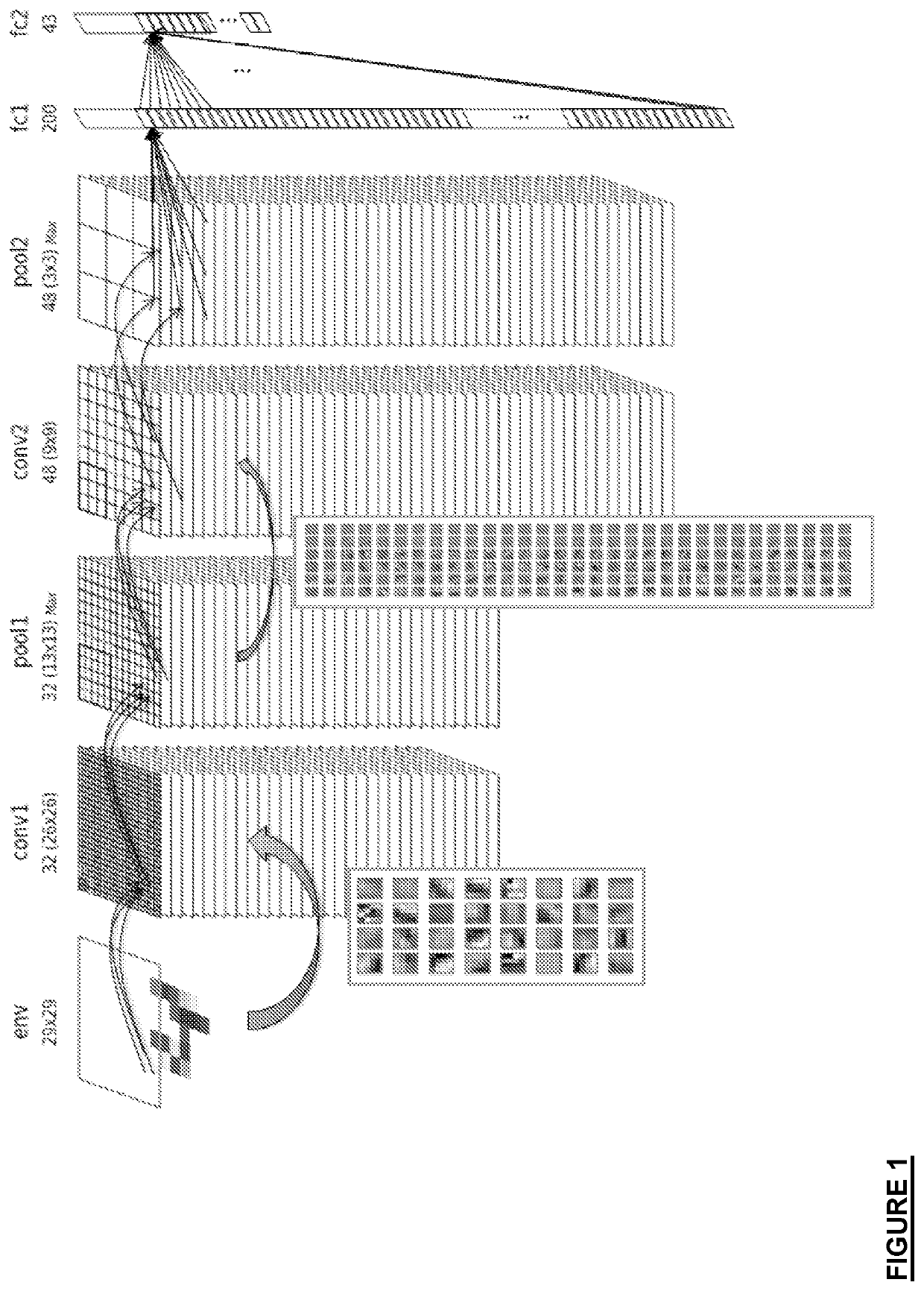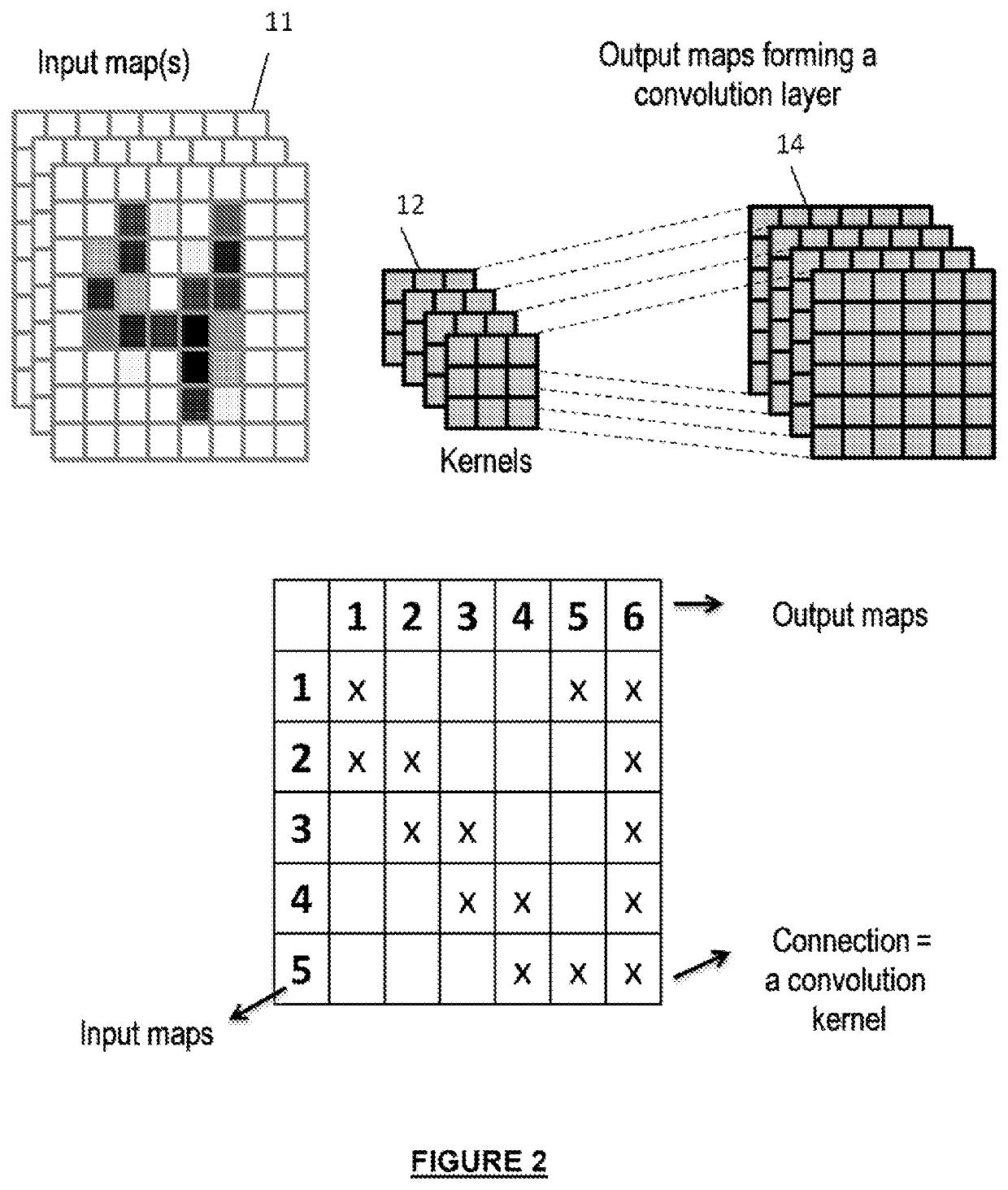Device and method for calculating convolution in a convolutional neural network
a convolutional neural network and convolutional neural network technology, applied in the field of convolutional neural network devices and methods, can solve the problems of affecting the effective implementation of on-board systems, affecting the efficiency of on-board systems, and requiring a large amount of memory and redundancies, so as to achieve low power consumption, low memory consumption, and high synaptic precision
- Summary
- Abstract
- Description
- Claims
- Application Information
AI Technical Summary
Benefits of technology
Problems solved by technology
Method used
Image
Examples
Embodiment Construction
[0044]To facilitate the comprehension of the description of certain embodiments, some features and definitions regarding neural networks are given below.
[0045]A neural network consists of one or more convolution layers, optionally including pooling layers. The layers may be followed by a multilayer perceptron classifier. The output of a convolution layer may be connected to the input of the following layer.
[0046]In a convolution layer, each neuron is connected to at least one portion (sub-matrix) of the input matrix. The submatrices have the same size for a given layer and their size is equal to the size of the filter. They may be offset from one another regularly and may overlap. The input matrix may be of any size. However, the input matrix is generally 2-D with values represented by gray-scale levels, the position of a given pixel being provided by its XY coordinates. For a color image, a plurality of gray-scale levels and a plurality of input matrices are used. The coordinates o...
PUM
 Login to View More
Login to View More Abstract
Description
Claims
Application Information
 Login to View More
Login to View More - R&D
- Intellectual Property
- Life Sciences
- Materials
- Tech Scout
- Unparalleled Data Quality
- Higher Quality Content
- 60% Fewer Hallucinations
Browse by: Latest US Patents, China's latest patents, Technical Efficacy Thesaurus, Application Domain, Technology Topic, Popular Technical Reports.
© 2025 PatSnap. All rights reserved.Legal|Privacy policy|Modern Slavery Act Transparency Statement|Sitemap|About US| Contact US: help@patsnap.com



